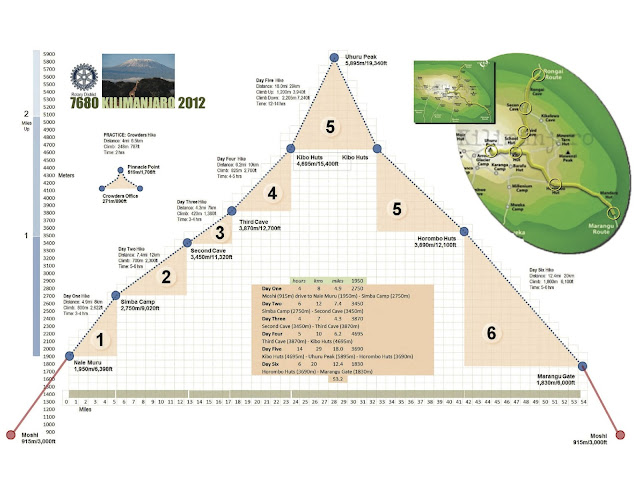Tarangire National Park in the dry season was parched. It is known for its massive baobab trees and herds of wildebeest and zebras, elephants and lions. We immediately began to see the wildebeests and zebras grazing on the dry grass. Soon we saw elephants down by the river, and then a pride of lions eating a recent kill. It was exciting to see the male lion sitting on guard, and the lionesses eating and lying around. Eventually they began to move on. As we drove out of the park we saw a single giraffe walking slowly along then across the road in front of us. Another two hours and we arrived at Highview Hotel, our home for the next three days.
Our next day we went to the Ngorongoro Conservation Area. The crater is a collapsed volcano that resulted in a flat floor surrounded by a rim of mountains. The highlight of the day was observing the interaction of lions, zebras, wildebeest, warthogs and hyenas. While the lions were not actively hunting, they were watching all the animals carefully. Two males were holding a position to mark territory and later the lionesses were prowling and stalking. At one time the lionesses were next to and on the road, seeking the shade of our vehicle. We were close enough to se that one of them lionesses had a head injury.
Day three was spent near the hotel in Karatu. We chose an 8 mile guided hike to the Elephant Caves. The cave is actually a place where elephants and cape buffalo go to root up soil that has nutrients they need. They eat the soil for calcium, phosphorous, and magnesium. While we saw no elephants at the cave, there were numerous elephant trails that crisscrossed the area, and the fresh scat indicated they had been there earlier in the day. To be walking where elephants had been was amazing. That afternoon we went to an Iraqw tribal center to learn the traditional ways the people had lived.
Day four took us to Lake Manyara National Park. We saw a very large troop of baboons traveling from one part of the park to another. We observed a large herd of elephants by the road. In the distance we cld see hippos standing in the water. Lots of monkeys and ones lone giraffe grazing in the trees. A flock of vultures were scavenging on a carcass, and more and more flew in to feed.
We had a very knowledgable guide and driver. He knew where to go to find animals and took us all over the parks. Pictures will follow when I get home.
Our next day we went to the Ngorongoro Conservation Area. The crater is a collapsed volcano that resulted in a flat floor surrounded by a rim of mountains. The highlight of the day was observing the interaction of lions, zebras, wildebeest, warthogs and hyenas. While the lions were not actively hunting, they were watching all the animals carefully. Two males were holding a position to mark territory and later the lionesses were prowling and stalking. At one time the lionesses were next to and on the road, seeking the shade of our vehicle. We were close enough to se that one of them lionesses had a head injury.
Day three was spent near the hotel in Karatu. We chose an 8 mile guided hike to the Elephant Caves. The cave is actually a place where elephants and cape buffalo go to root up soil that has nutrients they need. They eat the soil for calcium, phosphorous, and magnesium. While we saw no elephants at the cave, there were numerous elephant trails that crisscrossed the area, and the fresh scat indicated they had been there earlier in the day. To be walking where elephants had been was amazing. That afternoon we went to an Iraqw tribal center to learn the traditional ways the people had lived.
Day four took us to Lake Manyara National Park. We saw a very large troop of baboons traveling from one part of the park to another. We observed a large herd of elephants by the road. In the distance we cld see hippos standing in the water. Lots of monkeys and ones lone giraffe grazing in the trees. A flock of vultures were scavenging on a carcass, and more and more flew in to feed.
We had a very knowledgable guide and driver. He knew where to go to find animals and took us all over the parks. Pictures will follow when I get home.
